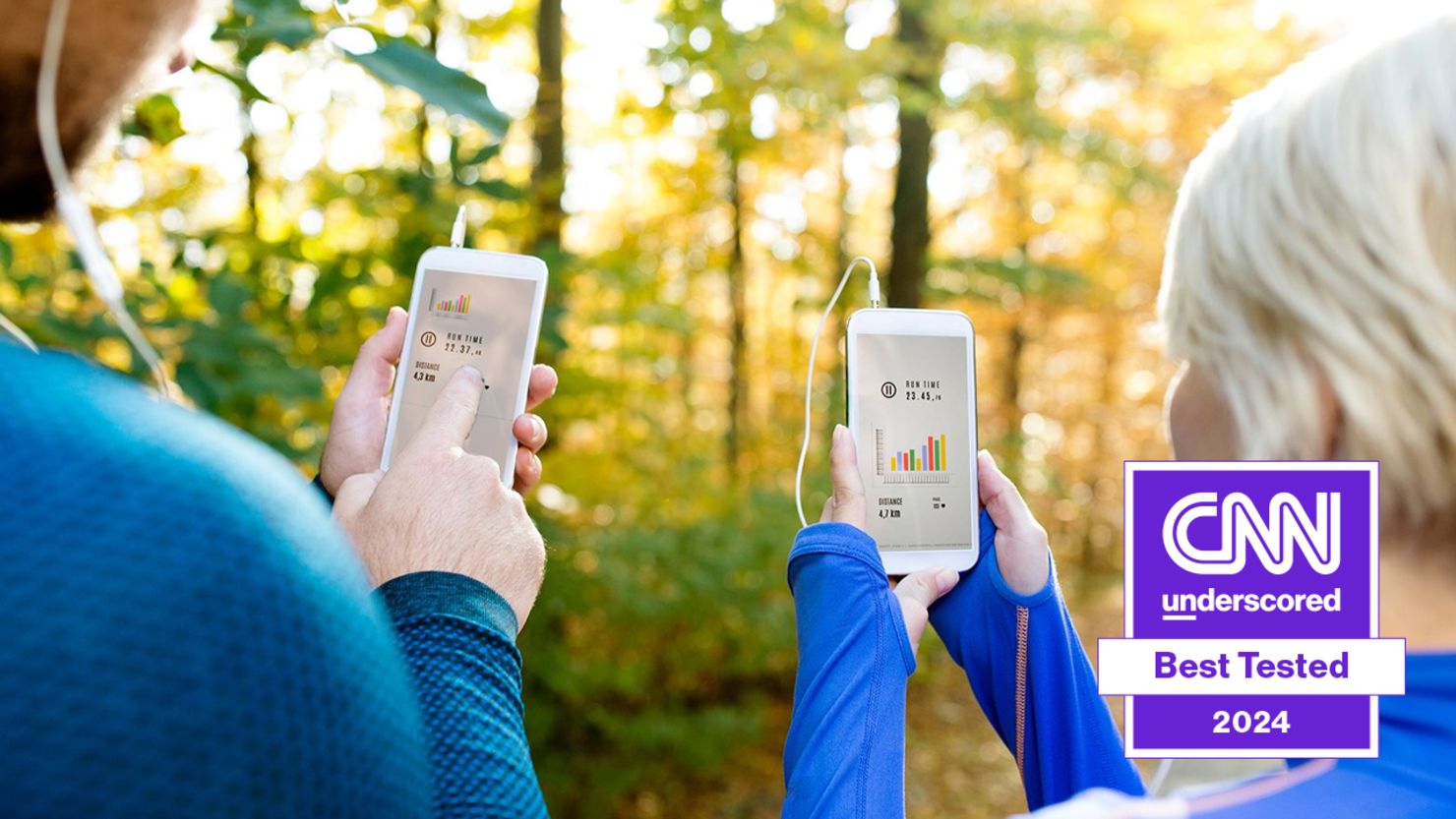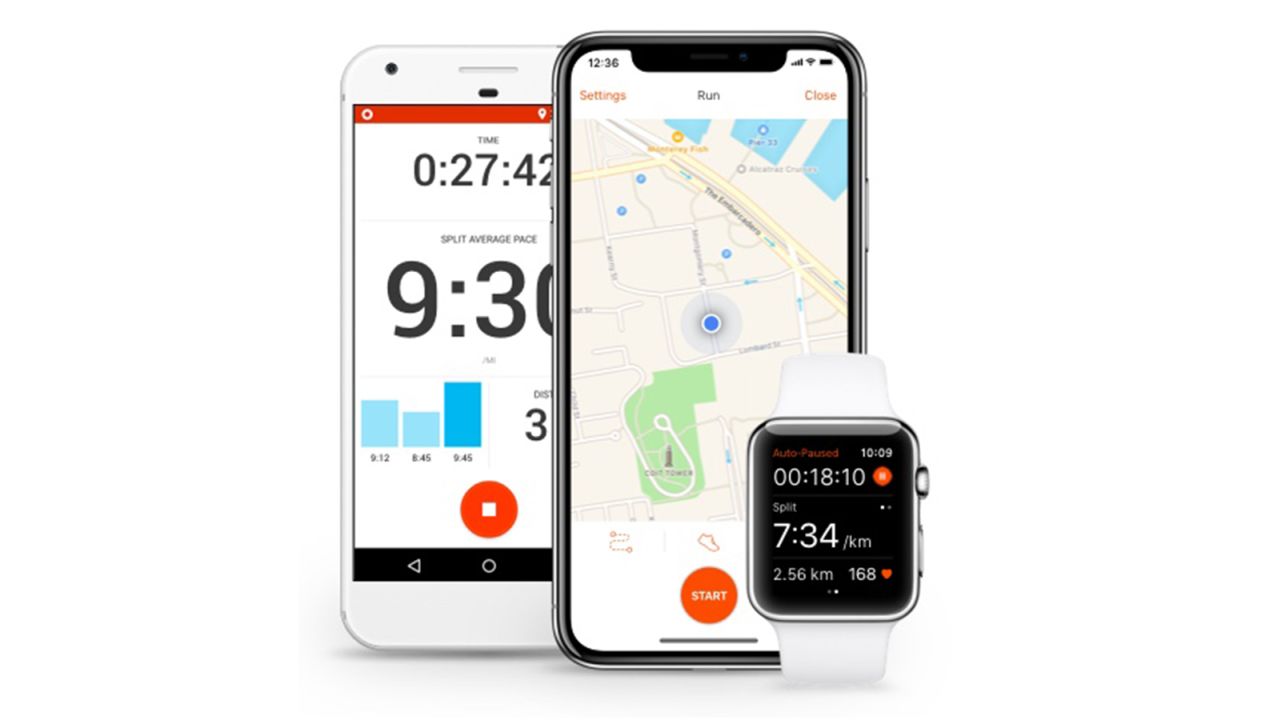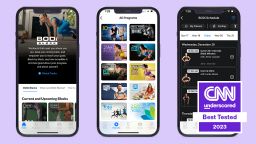If you want to run, then you need good running shoes and a running watch or fitness tracker to track your time. Free running apps can also help, offering statistics that help you chart your progress. Premium (that is, paid) versions of running apps can include more robust items like training logs and challenges. Novice, intermediate and elite runners can all benefit from the data these workout apps provide.
“Running apps can help runners of all ages and abilities keep track of their runs and chart their progress,” says runner Brendan Dagan, CEO of elitefeats, a company that times hundreds of races per year, including the Great Cow Harbor 10K Run, a USATF National 10K Championship race that takes place every September in Northport, NY. “Depending on what you want to accomplish, there’s a running app that can help you track your goal and meet it.”
To find the best running app, we put on our running hats, tied up our shoes and gave some premium running apps a real workout. Over the course of several weeks, we tested five different running apps: Couch to 5K (by Active Network), Map My Run (by Under Armour), Pacer Pedometer Premium, Runkeeper Go Premium (by Asics) and Strava. We learned two important things during testing: 1) the apps work best when paired with a heart rate monitor, such as a Garmin, Apple Watch or Fitbit, and 2) all the apps we tested are good at what they do; there are no real laggards in this pack. But, as with every race, there’s only one winner. In this case, it’s Strava.
Strava
Strava connects to a variety of heart rate monitors and offers robust tools for creating customized running routes. The app is recommended for experienced runners and professional or semi-pro athletes; however, it’s easy enough to use for any runner.
There’s a reason that Strava is our main pick: Strava isn’t just an app for runners, it’s an app for athletes. It offers a leaderboard that’s populated by marathon winners and Olympians. It offers a bevy of route-creation tools, easy customization of your heart rate zone and a dizzying array of metrics such as functional threshold power (FTP) as expressed in watts and work as expressed in kilojoules (egads). Strava codified literally every step we took while testing.
Thanks to Strava’s dynamic social media community, you can virtually race against other runners or pit yourself against their “segments,” that is, smaller portions of a run. If, like us, you’re not particularly competitive, then the “Matched activities” feature tracks your own current run against your previous runs in the same location. That way, you only run against yourself.
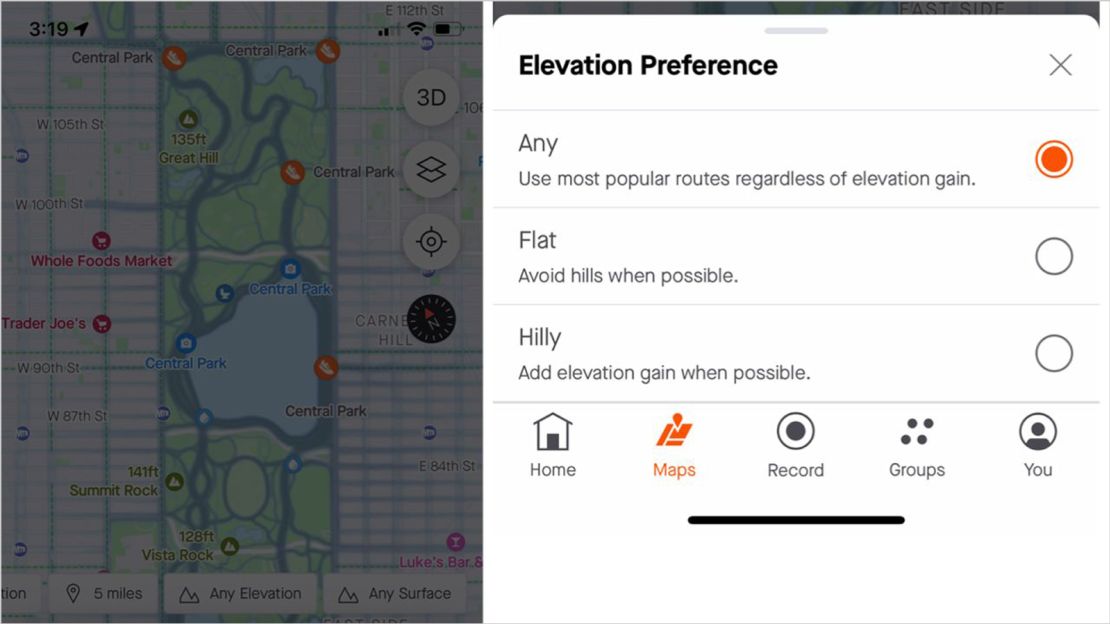
We were also impressed with how Strava connects to a wealth of heart rate monitors, not just the popular consumer ones. Even more, the app is complemented by a website packed with useful tools. In addition to earning digital badges on Strava’s “challenges,” you can win real-world prizes, like Marriott points. New joggers who’ve only just broken in their running shoes can enjoy Strava for its customized training plans. But for more serious athletes, this app is the gold standard. That said, unless you’re a competitive runner, you may never use Strava’s many esoteric features.
How to securely use running apps
A real issue with some running apps is the overall lack of privacy you have while using them. With most of these apps, you’re expected to share your health information with a third party — not to mention your location. If the idea of this makes you twitch, then running apps may not be for you.
But even the most trusting runner should lock down their personal information when they create their account, especially when you consider the privacy holes in many of these apps. For a rundown, let’s examine their security holes app by app.
- Couch to 5K will let you ask Active Network, its parent company, not to sell your data. But you have the option to do this online only, not on the mobile app.
- Map My Run’s privacy needs the most improvement. Under Armour, its parent company, will send you targeted ads and email marketing unless you opt out, but we didn’t find opting out to be clear or simple to do.
- Pacer makes it easy to shore up your data in the “Account Privacy Settings” selection. But Pacer offered zero information on how the company uses your data. Here in the 21st century, no privacy news may easily mean bad privacy news.
- Runkeeper is more invested in privacy than the other apps. It has a “Display Promotions” button that’s turned off by default. Despite reasonably good privacy features, both Activities and Maps can be seen by followers by default, until you set visibility to “Only Me.” Runkeeper also lets you download your data, then permanently delete it.
- Strava shares important privacy data by default, so we learned it’s up to you to opt out. We had initially signed in with both our Gmail and Apple accounts, and Strava pulled athletes for us to follow from our email — which we thought was a real invasion of privacy.
Until all running apps make users’ privacy a top priority, the security-conscious among us might just have to settle for the old “shoes and stopwatch” method of tracking our runs.
How we tested
During our pre-testing research, we found there are many different running apps available. We selected our five candidates to test based on desired features, security options and user reviews. After determining our testing pool, we downloaded all of the running apps to an iPhone and paired each app to an Apple Watch (our heart rate monitor). Then we spent dozens of hours tracking and testing each app’s functionality and features. We ran through each app multiple times — with the exception of the relatively simple-to-use app Couch to 5K, which we only used twice, yet managed to explore thoroughly.
Ease of use
- Installation and setup: To test the installation and setup process, we created usernames, set our weight and units of measurement (either imperial or metric) and paired our apps with a heart rate monitor. We learned fairly quickly that the phrase “you get what you put into it” is especially true when using running apps. Even with minimalist apps, you’re required to put in upfront work before you actually start running, from exploring training routines and exercise tips to adding profile pictures.
- Tracking: We tracked our runs and recovery walks both on the treadmill and outdoors using an Apple Watch. The Apple Watch has the advantage that widgets, tiny versions of the apps, appeared on our main screen. So, without fumbling for the phone in our pocket (or running belt), we easily tracked our activity on the Map My Run, Strava and Runkeeper apps, with a few simple taps. The Pacer app, which was linked to our Apple ecosystem, tracks without any kind of interfacing. Only the Couch to 5K app requires you to start tracking on your phone.
Online features
- Maps and social media: Throughout our testing, we noticed that every app has both maps and running-focused social media communities. We suspect that these features have been lifted from some Wordpress plug-in and skinned for a different look and feel. Runkeeper doesn’t have its own social media but instead links you to a Facebook group. We did not spend much time on social media, as we focused on more core features, but we noted that Strava has the most active community.
- Privacy: We explored each app’s data-sharing policies, considering how and why they used our data. We also investigated the apps’ privacy settings to see whether we could control our data.
Other running apps we tested
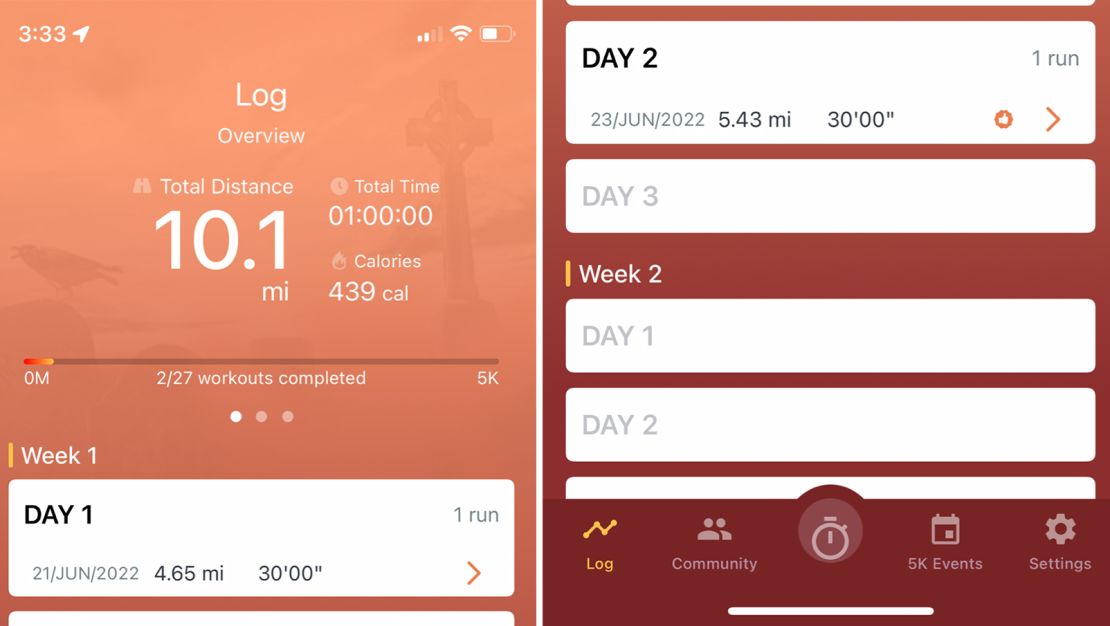
Couch to 5K
$5 at Apple App Store or Active Network
The strength of the Couch to 5K app is its simplicity. It teaches you to build your stamina with three half-hour running sessions per week over the course of nine weeks. The app tells you, at varying intervals, when to walk or jog. Afterward, its Log feature breaks down your activity (showing miles, a map of your run and time spent jogging versus walking).
What makes the Couch to 5K app smile-worthy are its virtual trainers, who chatted in our earphones as we ran. We were able to choose from an array of characters who coax you on your journey. A cheerful “runicorn.” A military drill instructor. Our favorite was the wisecracking zombie, who kept us on our toes. Their voices keep you on track and motivated and make running fun.
When you’re ready for the challenge, the Couch to 5K app will also recommend local 5K events in your area. Overall, Couch to 5K did as advertised and genuinely helped us off that couch. True beginners may require more walking time and less running time, so we suggest you take it at your own pace until you’re ready to keep up with the app.
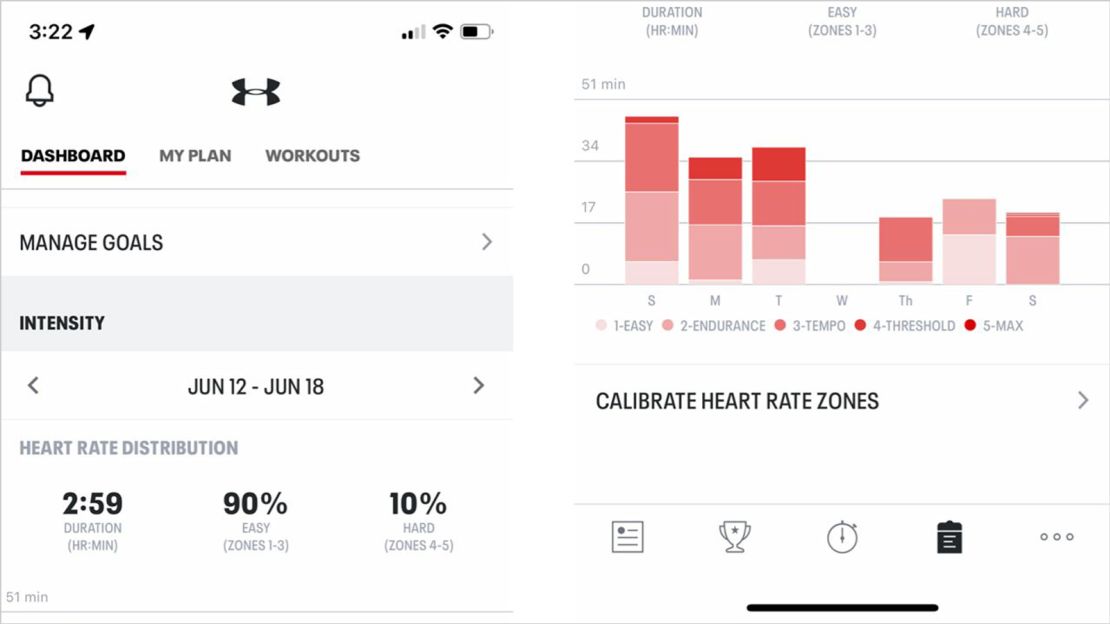
Map My Run
$6 per month or $30 per year at Under Armour
The Map My Run app is a capable app that can track all of the metrics you need to meet your personal goals; it’s here to guide you through the great outdoors. We easily found popular maps created by other runners in the app during testing. With a click of a button, we could re-run a favorite route.
But here’s the kicker: Although it’s easy to create your own map, you have to do it online only. There is no way to create your own map on the mobile app. For a paid app, the inability to create a map on the fly — when your focus is on maps — is an oversight.
We think the Map My Run app is at its best in its “Workout Routines” section, a collection of videos in categories such as “core strength” and “yoga for everyone.” Sure, you can find exercise videos all over the internet, but the ones in the Map My Run app are as helpful and accessible as it gets. Add to that the ability to configure audio cues, such as your distance and average pace, and you have a capable running app on your hands.
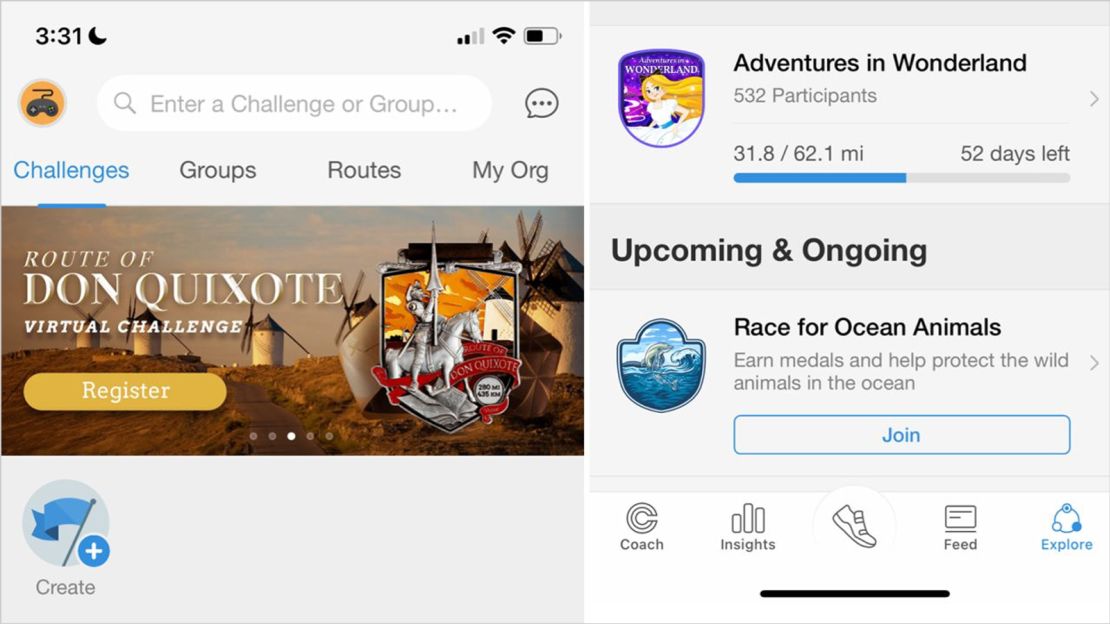
Pacer Pedometer Premium
$50 per year or $50 per year at Pacer Health
Pacer isn’t as much a running app as it is an app that uses running as a springboard to better overall fitness. The app is a trove of helpful information, such as lessons on diet and exercise, offering quizzes that reinforce its teachings. There are options to track your blood pressure and weight (which we didn’t do) as well as your diet (which we did). Pacer includes recipes with nutrition information. (Try the strawberry chia pudding!) Plus, its guided workouts in the form of short videos prepared us for when our rubber soles met the road.
There are running challenges offered in the app, which we took at our own pace. You can also track multiple fitness activities from the app’s pull-down menu. We adored the “Adventure Challenges” feature that has you virtually trekking through destinations such as Bangkok or even the solar system. During testing, we made sure we walked through Wonderland with Alice.
Since the Pacer app is dedicated to health more than running, it may not be the best choice for people who are determined to top every leaderboard. But with Pacer, you can put yourself into a running mindset. And that really is the first step toward meeting your fitness goals.
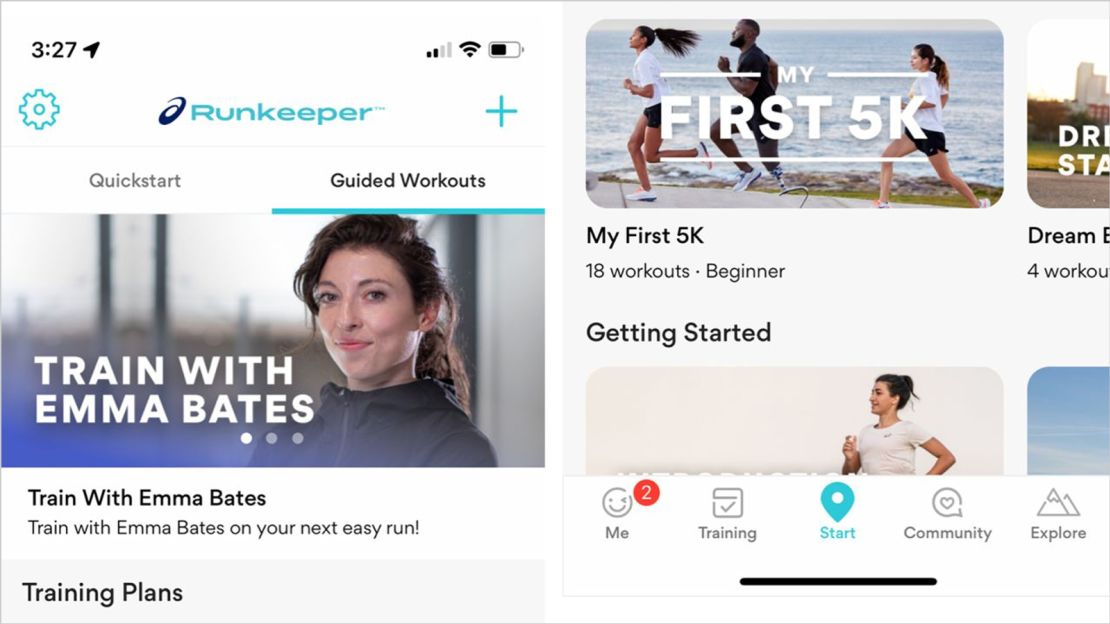
Runkeeper Go Premium
$10 per month or $40 per year at Asics
Runkeeper is the app for runners who want more from a running app than the Couch to 5K app offers yet less than an app like Strava. Runkeeper is the Swiss Army Knife of running apps: small yet incredibly multifunctional.
This running app has all of the features a runner looking to increase their speed and distance could desire: average pace. Achievements. Goals. A workable 5K running plan based on your parameters. We particularly enjoyed the “Guided Workouts” section — brought to you by professional athletes — which gives you audio guidance during your runs. Runkeeper also had the best blog (website only).
But we found a couple of small flaws in Runkeeper. Its “Pocket Track” feature, which automatically tracks you after you’ve been walking for 15 minutes, didn’t always keep up with us during testing. And, similar to the Couch to 5K app, we could select different trainer voices, but there was no way to preview them without starting a workout. Despite this, we think the Runkeeper app is well worth your time, especially your mile time. However, it’s more expensive than other apps we tested.
